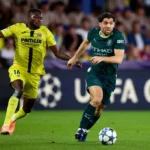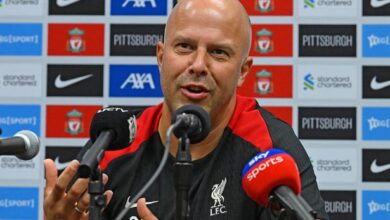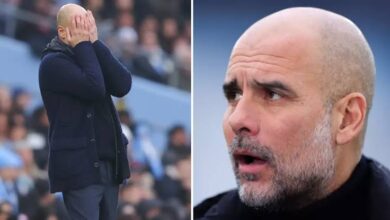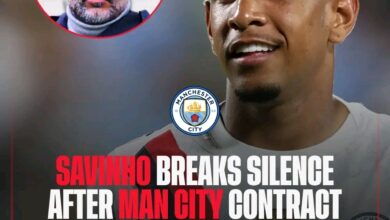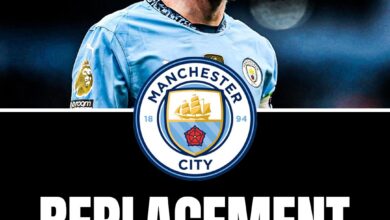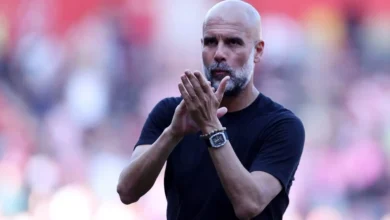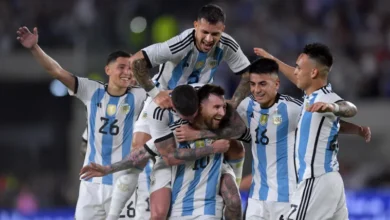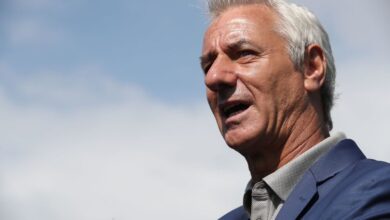Manchester City have agreed terms on £58.9m Ilkay Gundogan replacement
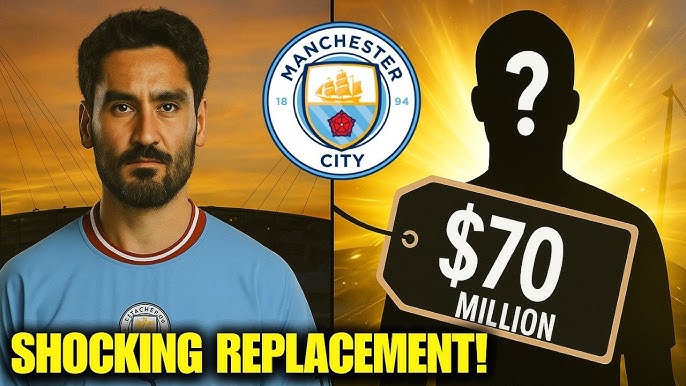
Manchester City’s journey through the 2024-25 season was a tale of unexpected struggles and hard-earned redemption. The sky blue giants, accustomed to dominating English football with their fluid passing and relentless attacking prowess, found themselves grappling with challenges that few anticipated at the season’s outset. What began as another campaign expected to yield silverware quickly transformed into a period of introspection and tactical recalibration under Pep Guardiola’s meticulous guidance.
The Citizens’ campaign was marked by an autumn and winter of discontent, where victories became increasingly elusive commodities. The team that had previously dismantled opposition defenses with surgical precision found themselves struggling to break down stubborn defensive blocks. Their trademark possession-based football, while still aesthetically pleasing, lacked the cutting edge that had characterized their previous title-winning campaigns. It was a period that tested the resolve of players, management, and supporters alike, as City’s usual dominance gave way to frustrating draws and unexpected defeats.
Despite these early struggles, Guardiola’s tactical acumen and the squad’s inherent quality eventually shone through. The team’s resilience became apparent in the latter stages of the season, as they mounted a characteristic comeback to secure third place in the Premier League. While this finish represented a significant improvement from their mid-season doldrums, it also highlighted the urgent need for squad rejuvenation in key areas. The campaign served as a stark reminder that even the most successful teams require constant evolution to maintain their competitive edge.
The Midfield Conundrum: Identifying the Core Issues
At the heart of Manchester City’s struggles lay a midfield department crying out for fresh blood and renewed energy. The engine room that had powered City’s most successful periods was showing clear signs of wear and tear, with several key components requiring immediate attention. The situation was particularly acute given the departures and declining performances of several established stars who had been instrumental in the club’s recent successes.
Kevin De Bruyne’s departure as a free agent represented perhaps the most significant blow to City’s creative arsenal. The Belgian maestro, whose vision and passing range had been instrumental in unlocking the tightest of defenses, left behind a void that seemed almost impossible to fill. His ability to thread passes through the eye of a needle, combined with his knack for arriving in the box at crucial moments, had made him irreplaceable in many observers’ eyes. The loss of such a pivotal figure inevitably disrupted the team’s creative flow and forced Guardiola to reconsider his tactical approach.
Compounding this loss was Phil Foden’s admission of burnout, which significantly impacted his goal-scoring output throughout the campaign. The England international, who had previously been a reliable source of goals from midfield positions, found himself struggling to replicate the form that had made him one of Europe’s most promising young talents. His candid acknowledgment of fatigue highlighted the physical and mental toll that consistent high-level performance can exact on even the most gifted players. This situation underscored the need for squad depth and rotation options that could maintain performance levels across a grueling season.
The return of Ilkay Gundogan from Barcelona had provided temporary relief, but the German’s advancing years made it clear that this was merely a short-term solution. While his experience and leadership qualities remained invaluable, the approaching milestone of his 35th birthday in October served as a stark reminder of the need for long-term planning. Gundogan’s second stint at the Etihad, though successful in many respects, was always intended as a bridge to the future rather than a permanent fix.
Enter Tijjani Reijnders: The Dutch Dynamo
In this context of midfield uncertainty and the pressing need for rejuvenation, Tijjani Reijnders emerged as the perfect solution to Manchester City’s problems. The 26-year-old Dutch international had been quietly establishing himself as one of Serie A’s most consistent and versatile midfield performers during his time at AC Milan. His journey from the Netherlands to Italy had been marked by steady improvement and increasing recognition of his unique skill set.
Reijnders’ arrival at Milan in 2023 had initially raised few eyebrows outside of Italy, but his subsequent performances quickly established him as a key figure in the Rossoneri’s midfield setup. His ability to seamlessly transition between different roles within the team’s tactical framework made him an invaluable asset to his coaches and teammates alike. Whether deployed as a deep-lying playmaker, a box-to-box midfielder, or in a more advanced creative role, Reijnders consistently delivered performances that combined technical excellence with tactical intelligence.
The statistical evidence of Reijnders’ impact at Milan painted a compelling picture of a player reaching his prime years. His tally of 10 goals and three assists in 37 Serie A appearances during the season represented a significant return for a midfielder who was not primarily tasked with goal-scoring responsibilities. This output demonstrated his ability to contribute meaningfully in the final third while maintaining his defensive duties and creative responsibilities. His performances in the Champions League, where he netted three goals in 10 appearances, further underlined his ability to perform on the biggest stages.
The Gundogan Connection: A Perfect Parallel
Perhaps the most compelling aspect of Manchester City’s pursuit of Reijnders was the striking similarity between the Dutch midfielder and Ilkay Gundogan during his prime years at the Etihad. Advanced scouting reports and statistical analysis revealed remarkable parallels between the two players’ playing styles, strengths, and contributions to their respective teams. This similarity was not merely coincidental but reflected deep-seated tactical and technical qualities that made both players perfectly suited to Guardiola’s system.
FBRef’s comprehensive scouting reports, which automatically compare players’ statistics against others in leagues of similar quality, identified Gundogan as Reijnders’ most comparable player. This statistical correlation extended beyond mere numbers to encompass playing style, positional versatility, and tactical intelligence. Both players possessed the rare ability to operate effectively across multiple midfield roles while maintaining consistency in their performances and decision-making.
The defensive aspects of both players’ games, while not their primary strengths, were adequate for the roles they were expected to fulfill. Neither Reijnders nor Gundogan was renowned for aggressive tackling or extensive defensive coverage, but both possessed the positional awareness and tactical discipline required to function effectively in Guardiola’s system. Their defensive contributions were more subtle, involving intelligent pressing, ball retention, and the ability to slow down opposition attacks through clever positioning and timely interventions.
Where both players truly excelled was in their ability to carry the ball forward during the build-up phases of attacks. This skill set was particularly valuable in Guardiola’s system, which emphasized patient possession-based football and the gradual progression of the ball through different zones of the pitch. Both players possessed the technical ability to receive passes in tight spaces, the vision to identify forward options, and the courage to carry the ball into more advanced positions when opportunities presented themselves.
Perhaps most importantly, both players shared the ability to arrive in the penalty area at crucial moments to provide the finishing touch to moves they had helped to create. This late-arriving presence in the box was a hallmark of Gundogan’s most successful periods at City and appeared to be a natural strength of Reijnders’ game as well. Their goal-scoring records from midfield positions testified to this shared ability to time their runs and find space in crowded penalty areas.
The Strategic Logic: Why Reijnders Makes Perfect Sense
From a strategic perspective, Manchester City’s pursuit of Tijjani Reijnders represented more than just a simple replacement signing. The Dutch midfielder offered the prospect of a like-for-like replacement for Gundogan’s influence while providing several additional advantages that could prove crucial for the club’s long-term success. His age profile, in particular, offered the promise of sustained performance levels over multiple seasons rather than the short-term fixes that had characterized some of City’s recent midfield acquisitions.
At 26 years old, Reijnders was entering what are traditionally considered the prime years for a central midfielder. This age represented the perfect balance between experience and physical capability, suggesting that City would benefit from his services for many years to come. Unlike some younger prospects who might require time to adapt to the Premier League’s demands, or older players whose best years might be behind them, Reijnders offered immediate impact potential combined with long-term value.
The energy factor was another crucial consideration in City’s pursuit of the Dutch international. The physical demands of Guardiola’s system, with its emphasis on high pressing, constant movement, and rapid transitions between defensive and attacking phases, required players capable of maintaining high intensity levels throughout entire matches. Reijnders’ age and physical condition suggested he could provide the dynamism and endurance that City’s midfield had sometimes lacked during their difficult periods.
His versatility across different midfield roles was particularly appealing given the tactical flexibility that Guardiola valued so highly. The ability to deploy the same player in multiple positions within the same match, or to adjust his role based on the specific requirements of different opponents, represented a significant tactical asset. This flexibility would allow City to maintain their tactical unpredictability while ensuring consistent performance levels regardless of the specific system employed.
The Transfer Negotiations: A Deal Takes Shape
As Manchester City’s interest in Tijjani Reijnders intensified, the complex machinery of modern football transfers began to turn. Reports from respected transfer market analysts and journalists started to paint a picture of serious negotiations between the clubs, with both sides apparently motivated to reach a mutually beneficial agreement. The process highlighted the sophisticated financial and strategic considerations that underpin major transfers in contemporary football.
Gianluca Di Marzio, one of Italy’s most respected transfer market journalists, was among the first to report concrete progress in the negotiations. His sources suggested that a transfer fee in the region of €70 million, including various performance-related add-ons, had been verbally agreed between Manchester City and AC Milan. This figure represented a significant investment by City’s standards, reflecting both the player’s perceived value and the competitive nature of the modern transfer market.
The structure of the deal, with its combination of guaranteed fees and performance-related bonuses, was typical of high-value transfers in the current market. Such arrangements allowed selling clubs to maximize their return if players performed well at their new clubs, while providing buying clubs with some protection against potential disappointments. The specific terms of these add-ons, while not publicly disclosed, likely related to appearances, achievements, and individual performance metrics.
Fabrizio Romano, perhaps the most influential transfer market journalist in the world, added further credibility to these reports by confirming that personal terms had already been agreed between Manchester City and Reijnders himself. This development was particularly significant as it suggested that the player was fully committed to the move and that any remaining obstacles were purely administrative rather than substantive. The agreement on personal terms typically covers salary, contract length, bonuses, and various other financial and lifestyle considerations.
The apparent smoothness of the personal terms negotiations suggested that City had presented an attractive package to the Dutch midfielder. While specific salary details remained confidential, it was reasonable to assume that the offer represented a significant improvement on Reijnders’ current arrangements at Milan. Beyond purely financial considerations, the opportunity to work under Pep Guardiola and compete for the highest honors in English and European football likely played a significant role in the player’s decision-making process.
The Final Formalities: Crossing the Finish Line
With both the transfer fee and personal terms apparently agreed, attention turned to the various procedural requirements that must be completed before any major transfer can be officially confirmed. These formalities, while often treated as mere administrative details by fans and media, represent crucial stages in the transfer process that can occasionally derail even the most advanced negotiations.
The medical examination process, in particular, represents a critical juncture in any major transfer. Modern football’s medical assessments have become increasingly sophisticated, involving comprehensive evaluations of players’ current physical condition, injury history, and long-term health prospects. For a player like Reijnders, who would be expected to contribute immediately to City’s campaigns across multiple competitions, passing these medical examinations with flying colors would be essential.
The medical process typically involves multiple stages, beginning with basic fitness assessments and progressing through detailed examinations of specific body systems and potential problem areas. Specialists in sports medicine, cardiology, orthopedics, and other relevant fields conduct thorough evaluations designed to identify any existing or potential issues that could affect the player’s future performance or availability.
Beyond the medical examinations, various legal and administrative procedures must be completed to satisfy the requirements of different governing bodies. The Premier League, UEFA, and FIFA all have specific regulations governing player transfers, and compliance with these rules is essential for the deal’s completion. Documentation must be prepared, submitted, and approved by the relevant authorities before the transfer can be officially registered.
Work permit and visa requirements represent another potential hurdle, particularly for non-EU players moving to English clubs post-Brexit. While Reijnders, as a Dutch national, should face fewer complications in this regard than some other international players, the administrative process still requires careful attention to detail and proper documentation.
The Broader Implications: City’s Strategic Vision
The pursuit of Tijjani Reijnders represented more than just a single transfer; it reflected Manchester City’s broader strategic approach to squad building and long-term success. The club’s willingness to invest significantly in a midfielder who was not yet considered among the absolute elite demonstrated their commitment to intelligent recruitment and strategic planning rather than simply pursuing the most high-profile available targets.
This approach aligned with City’s historical success in identifying players who were perfectly suited to Guardiola’s system rather than necessarily being the most famous or expensive options available. Previous successes with players like Bernardo Silva, Rodri, and even Gundogan himself during his initial arrival had demonstrated the value of this targeted recruitment strategy. The focus on tactical fit and system compatibility over pure star power had consistently delivered positive results for the club.
The timing of the Reijnders pursuit also reflected City’s proactive approach to squad planning. Rather than waiting for their midfield crisis to deepen or for key players to leave unexpectedly, the club was moving decisively to address identified weaknesses while they still had time to integrate new signings properly. This forward-thinking approach was characteristic of the most successful clubs in modern football.
The financial commitment involved in the Reijnders deal also sent a clear message about City’s continued ambitions despite their recent struggles. The willingness to invest €70 million in a single player demonstrated that the club remained committed to competing at the highest level and was prepared to back Guardiola’s vision for the team’s future development.
Looking Forward: The Reijnders Era Begins
As the transfer formalities neared completion, attention naturally turned to how Tijjani Reijnders might fit into Manchester City’s tactical setup and what his arrival might mean for the club’s prospects in the coming seasons. The Dutch midfielder’s integration into Guardiola’s system would represent a fascinating case study in tactical adaptation and the evolution of playing styles within elite football.
Guardiola’s track record of successfully integrating new signings into his tactical framework provided reason for optimism regarding Reijnders’ potential impact. The Spanish coach’s ability to identify and develop the specific qualities that make players successful within his system had been demonstrated repeatedly throughout his career. From Barcelona to Bayern Munich to Manchester City, Guardiola had consistently extracted the maximum potential from his players while adapting his tactical approach to suit their strengths.
The prospect of Reijnders forming partnerships with existing City midfielders like Rodri, Bernardo Silva, and the emerging young talents in the squad offered exciting possibilities for tactical evolution. The Dutch midfielder’s versatility suggested that he could complement different types of players and adapt to various tactical formations and approaches as required by specific match situations.
His arrival would also provide Guardiola with additional tactical flexibility, allowing for different approaches against different types of opponents. The ability to field different midfield combinations based on the specific requirements of each match would enhance City’s adaptability and make them more difficult for opponents to prepare against effectively.
The Reijnders signing represented a statement of intent from Manchester City as they looked to reclaim their position at the summit of English and European football. While the previous season’s struggles had raised questions about the team’s long-term prospects, moves like this demonstrated the club’s determination to address their weaknesses and continue competing for the highest honors.
As the transfer window progressed and the deal moved toward its completion, Manchester City fans could look forward to welcoming a player who appeared perfectly suited to their team’s needs and tactical requirements. The combination of youth, experience, versatility, and proven quality that Reijnders brought to the table suggested that he could play a crucial role in the club’s future success stories.
The journey from initial interest to completed transfer had demonstrated the complex realities of modern football recruitment, but it had also showcased Manchester City’s continued ability to identify and secure their preferred targets. As Tijjani Reijnders prepared to begin his Manchester City career, both player and club could look forward to what promised to be an exciting and successful partnership in the seasons ahead.



